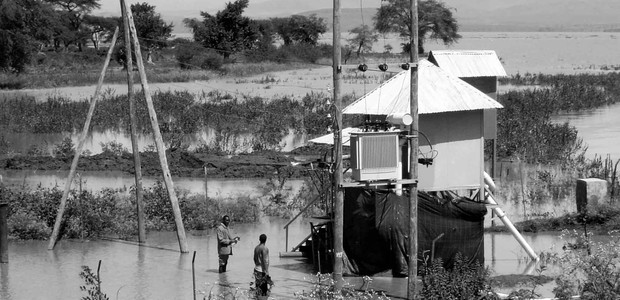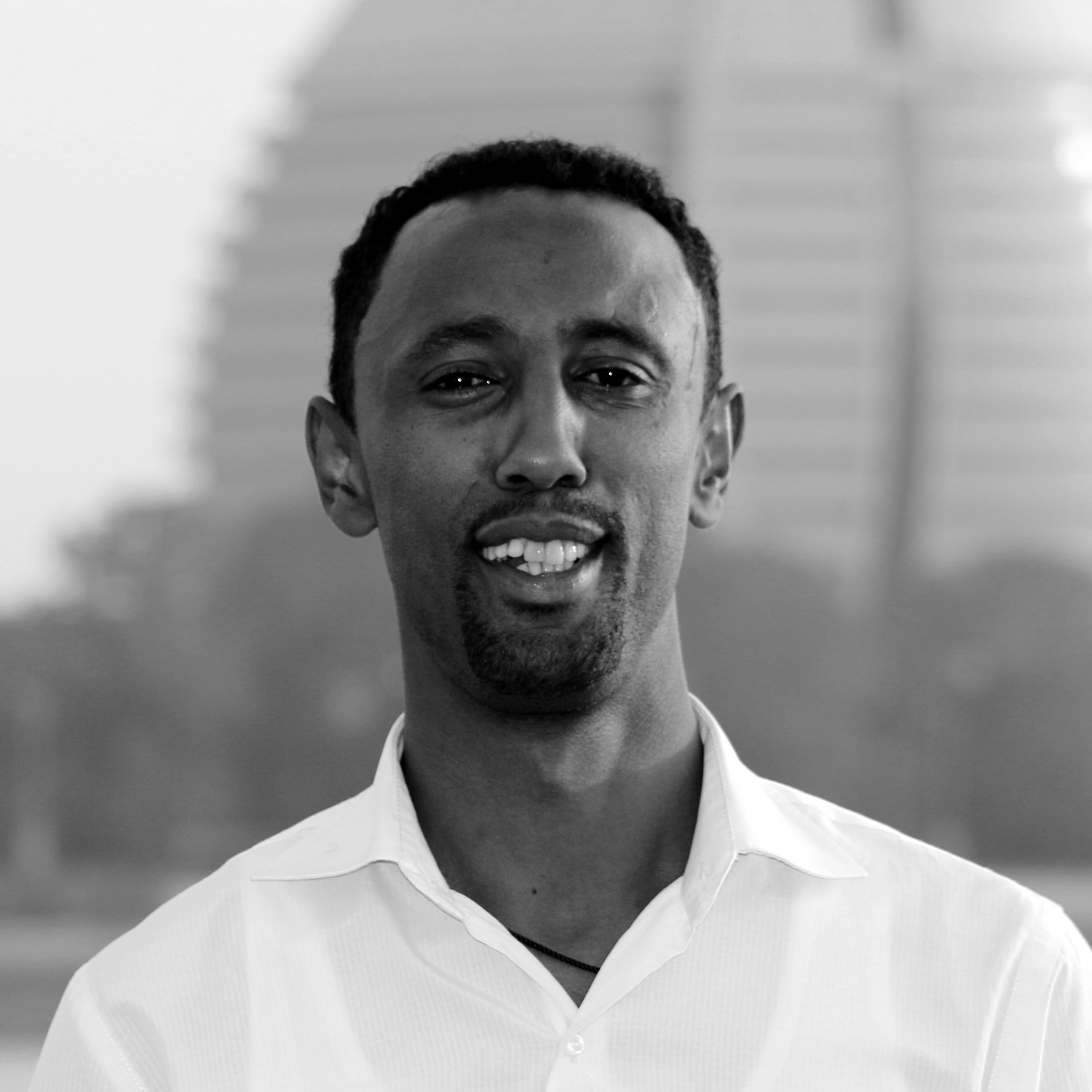Towards a green digital revolution

Amsalu Kassa, a 48-year-old farmer in Ethiopia’s Robit District, increasingly struggles to make a living. “We face heavy rains, floods and snow during Kiremet (rainy season) that wash away our crops,” he says about the ever more extreme weather patterns caused by climatic changes. “So we are focusing on irrigation-assisted Bega (dry season) farming.”
Like Kassa, millions of farmers try to adapt to the ever-changing realities amidst climate change. But to safeguard their livelihood and tackle the Earth’s triple planetary crisis – climate, nature and pollution – bold and urgent multilateral cooperation and action are needed to secure a better future on a healthy planet.
Envisioning “A healthy planet for the prosperity of all – our responsibility, our opportunity”, Stockholm+50, hosted by the Government of Sweden, convened by the United Nations General Assembly and attended by hundreds of speakers, was held in Stockholm, Sweden, on 2-3 June 2022.
The meeting commemorated 50 years since the 1972 UN Conference on the Human Environment, which made the environment a pressing global issue for the first time. Some 113 countries attended, and participants adopted a series of principles on the environment, including the Stockholm Declaration and Action Plan for the Human Environment. The UN Environment Programme (UNEP) was created as a result of the conference.
Stockholm+50 has been a milestone.
The two-day international meeting concluded with a statement from co-hosts Sweden and Kenya, drawn from the Member States and stakeholders through the meeting’s plenaries and leadership dialogues.
The statement contains several recommendations for an actionable agenda, including, among others, placing human well-being at the centre of a healthy planet and prosperity for all; recognising and implementing the right to a clean, healthy and sustainable environment; adopting systemwide changes in the way our current economic system works, and accelerate transformations of high impact sectors.
“We believe that we have – collectively – mobilised and used the potential of this meeting. We now have a blueprint of acceleration to take further,” Sweden’s Minister for Climate and the Environment, Annika Strandhäll, said in her closing remarks. “Stockholm+50 has been a milestone on our path towards a healthy planet for all, leaving no one behind.”
“The variety of voices and bold messages that have emerged from these two days demonstrate a genuine wish to live up to the potential of this meeting and build a future for our children and grandchildren on this, our only planet,” said Keriako Tobiko, Kenya’s Cabinet Secretary for the Environment. “We didn’t just come here to commemorate, but to build forward and better, based on the steps taken since 1972.”
Using technology to build forward and better
In the last centuries, scientists have observed, examined, experimented, and understood the triggering factors behind environmental havoc due to climate change and explained the effects of greenhouse gases like carbon dioxide. Digital technologies have assisted scientists in developing models and cast predictions.
Digital technologies are currently transforming the water management system through remote sensing services and technologies that can facilitate mapping, assessing and monitoring of water resources, controlling water hyacinth, flood and drought management, surface and groundwater monitoring and safeguarding sustainable wetlands – good news not only for the most climate-vulnerable people like Kassa.
The Nile Basin Initiative (NBI), a partnership of ten riparian states, for example, has developed a Flood Forecast and Early Warning System (FFEWS), a digital drought forecast dashboard, that played a significant role in predicting the Nile’s water levels during the 2020 floods in Sudan.
Dr. Tirusew Asefa, a water engineer at Florida University and Nile Basin expert, says that digitalisation is helping with proactive drought forecast and mitigation approaches, basin-wide decision support tools and the use of crowdsourcing to understand certain aspects of the watershed, building cluster-based computational capabilities to run a range of scenarios.
And water diplomacy has gone digital too, with various governmental and non-governmental bodies engaging the public online around transboundary water cooperation. For example, in the Nile Basin, the use of technology in diplomacy fosters collaboration through data sharing, minimising misinformation and enhancing transparency and trust among riparian states.
“Having hydrologic and climatic variables widely collected and making it available for the public will not only help people of the basin to understand the state of the basin but encourage innovation and cooperation to solve complex problems,” says Asefa.
Digital technologies increase productivity, and digital transformation brings new possibilities allowing us to measure and track sustainability progress, optimise the use of resources, reduce greenhouse gas emissions, and enable a more circular economy.
The Action Plan for a Sustainable Planet in the Digital Age
More than 1,000 concerned bodies and experts have identified population growth, geopolitics, economic development, industrialisation and climate change as factors that have intensified the pressure on already scarce resources and prepared a joint action plan to co-create a sustainable digital transformation globally.
The action plan is a new international vision to harness digital change for sustainability goals. It is being co-created by the Coalition for Digital Environmental Sustainability (CODES) within the UN Secretary General’s Roadmap for Digital Cooperation. Following a year of consultation and review, the flagship action plan was launched at the Stockholm+50, promoting a comprehensive and strategic approach to accelerate sustainability in all aspects of digitalisation.
“After a year of multi-stakeholder consultation, we have today an action plan for a sustainable planet in the digital age that put forward an ambition for how to achieve a more green and inclusive digital future from specific actions and priorities,” says Maria Francesca Spatolisano, UN General’s Acting Envoy on Technology in her message.
“Digital technologies help with monitor and predict our environment as well as enable the transition to environmental sustainability in various essential industries. While digital technologies can be powerful enablers of positive change, they too have significant impacts on the environment,” the Acting Envoy on Technology adds.
CODES is a global engagement platform for governments, companies, and civil societies and envisions a digital transformation of the economy and society that enables a sustainable and equitable future for all. It is co-championed by a mix of actors, including UNEP, UNDP, the International Science Council, the German Environment Agency, Future Earth, Sustainability in the Digital Age and the Kenyan Environment Ministry in coordination with the Office of the UN Secretary General’s Envoy on Technology.
Digitalisation has many potentials to make sustainability possible.
“We focus on digital transformation and digital sustainability. Digitalisation has many potentials to make sustainability possible, but it can also drive, even accelerate, unsustainable growth, resource consumption, inequality and social division. Digitalisation needs to be shaped and governed. How we can bring these together is the important point,” says Dirk Messner, the German Environment Agency (UBA) President.
Digital transformation can enable solutions to the climate crisis through decarbonisation, energy efficiency and a circular economy, says Messner, adding: “It is also designed for automated sustainability decisions and optimised use of resources. With regard to business transparency, full supply chain transparency and disclosure of environmental value through digitalisation is expected.”
Leaping forward
“We have to unlock the vast potential of digital innovations to accelerate the better implementation of the 2030 Agenda by creating a common framework of global action to make digitalisation the change-maker towards a Sustainable Planet,“ says Dirk Messner.
Three critical areas for urgent collective action are listed in CODES’ Action Plan, namely: Creating the enabling conditions to align the vision, values and objectives of the digital age with sustainable development; committing to sustainable digitalisation that mitigates the negative environmental and social impacts of digital technologies; and directing efforts, incentives and investments toward digital innovation that accelerate environmental and social sustainability.
For Asefa understanding, the potential impact of climate change in the Nile Basin greatly depends on our understanding of the complex relationship between water, food and energy, which in turn is limited because of insufficient advances in digitalisation.
Our understanding of what’s happening today as supported by the data we have is very much limited, says Asefa, adding: “This, in turn, impacts how we conclude impacts in 20, 50 and 100 years. This gap gets worst in the Nile Basin. Digitalisation will allow us to understand what is happening today, but also monitor and figure out what is potentially waiting for us in the coming years.”





